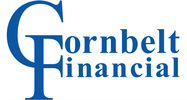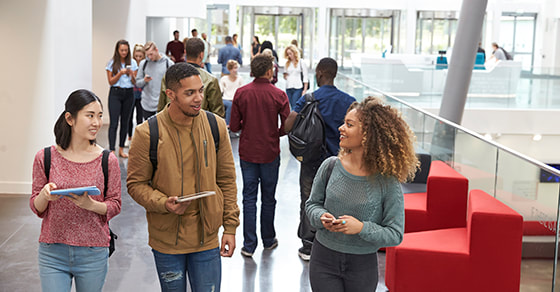Families with college students may save tax on their 2017 returns with one of these breaks2/26/2018 Whether you had a child in college (or graduate school) last year or were a student yourself, you may be eligible for some valuable tax breaks on your 2017 return. One such break that had expired December 31, 2016, was just extended under the recently passed Bipartisan Budget Act of 2018: the tuition and fees deduction.
But a couple of tax credits are also available. Tax credits can be especially valuable because they reduce taxes dollar-for-dollar; deductions reduce only the amount of income that’s taxed. Higher education breaks 101 While multiple higher-education breaks are available, a taxpayer isn’t allowed to claim all of them. In most cases you can take only one break per student, and, for some breaks, only one per tax return. So first you need to see which breaks you’re eligible for. Then you need to determine which one will provide the greatest benefit. Also keep in mind that you generally can’t claim deductions or credits for expenses that were paid for with distributions from tax-advantaged accounts, such as 529 plans or Coverdell Education Savings Accounts. Credits Two credits are available for higher education expenses:
If you’re eligible for the American Opportunity credit, it will likely provide the most tax savings. If you’re not, consider claiming the Lifetime Learning credit. But first determine if the tuition and fees deduction might provide more tax savings. Deductions Despite the dollar-for-dollar tax savings credits offer, you might be better off deducting up to $4,000 of qualified higher education tuition and fees. Because it’s an above-the-line deduction, it reduces your adjusted gross income, which could provide additional tax benefits. But income-based limits also apply to the tuition and fees deduction. Be aware that the tuition and fees deduction was extended only through December 31, 2017. So it won’t be available on your 2018 return unless Congress extends it again or makes it permanent. Maximizing your savings If you don’t qualify for breaks for your child’s higher education expenses because your income is too high, your child might. Many additional rules and limits apply to the credits and deduction, however. To learn which breaks your family might be eligible for on your 2017 tax returns — and which will provide the greatest tax savings — please contact us. © 2018
0 Comments
With kids back in school, it’s a good time for parents (and grandparents) to think about college funding. One option, which can be especially beneficial if the children in question still have many years until they’ll be starting their higher education, is a Section 529 plan. Tax-deferred compounding 529 plans are generally state-sponsored, and the savings-plan option offers the opportunity to potentially build up a significant college nest egg because of tax-deferred compounding. So these plans can be particularly powerful if contributions begin when the child is quite young. Although contributions aren’t deductible for federal purposes, plan assets can grow tax-deferred. In addition, some states offer tax incentives for contributing. Distributions used to pay qualified expenses (such as tuition, mandatory fees, books, supplies, computer equipment, software, Internet service and, generally, room and board) are income-tax-free for federal purposes and typically for state purposes as well, thus making the tax deferral a permanent savings. More pluses 529 plans offer other benefits as well:
Finally, 529 plans provide estate planning benefits: A special break for 529 plans allows you to front-load five years’ worth of annual gift tax exclusions, which means you can make up to a $70,000 contribution (or $140,000 if you split the gift with your spouse) in 2017. In the case of grandparents, this also can avoid generation-skipping transfer taxes. Minimal minuses One negative of a 529 plan is that your investment options are limited. Another is that you can make changes to your options only twice a year or if you change the beneficiary. But whenever you make a new contribution, you can choose a different option for that contribution, no matter how many times you contribute during the year. Also, you can make a tax-free rollover to another 529 plan for the same child every 12 months. We’ve focused on 529 savings plans here; a prepaid tuition version of 529 plans is also available. If you’d like to learn more about either type of 529 plan, please contact us. We can also tell you about other tax-smart strategies for funding education expenses. © 2017 At back-to-school time, much of the focus is on the students returning to the classroom — and on their parents buying them school supplies, backpacks, clothes, etc., for the new school year. But let’s not forget about the teachers. It’s common for teachers to pay for some classroom supplies out of pocket, and the tax code provides a special break that makes it a little easier for these educators to deduct some of their expenses.
The miscellaneous itemized deduction Generally, your employee expenses are deductible if they’re unreimbursed by your employer and ordinary and necessary to your business of being an employee. An expense is ordinary if it is common and accepted in your business. An expense is necessary if it is appropriate and helpful to your business. These expenses must be claimed as a miscellaneous itemized deduction and are subject to a 2% of adjusted gross income (AGI) floor. This means you’ll enjoy a tax benefit only if all your deductions subject to the floor, combined, exceed 2% of your AGI. For many taxpayers, including teachers, this can be a difficult threshold to meet. The educator expense deduction Congress created the educator expense deduction to allow more teachers and other educators to receive a tax benefit from some of their unreimbursed out-of-pocket classroom expenses. The break was made permanent under the Protecting Americans from Tax Hikes (PATH) Act of 2015. Since 2016, the deduction has been annually indexed for inflation (though because of low inflation it hasn’t increased yet) and has included professional development expenses. Qualifying elementary and secondary school teachers and other eligible educators (such as counselors and principals) can deduct up to $250 of qualified expenses. (If you’re married filing jointly and both you and your spouse are educators, you can deduct up to $500 of unreimbursed expenses — but not more than $250 each.) Qualified expenses include amounts paid or incurred during the tax year for books, supplies, computer equipment (including related software and services), other equipment and supplementary materials that you use in the classroom. For courses in health and physical education, the costs for supplies are qualified expenses only if related to athletics. An added benefit The educator expense deduction is an “above-the-line” deduction, which means you don’t have to itemize and it reduces your AGI, which has an added benefit: Because AGI-based limits affect a variety of tax breaks (such as the previously mentioned miscellaneous itemized deductions), lowering your AGI might help you maximize your tax breaks overall. Contact us for more details about the educator expense deduction or tax breaks available for other work-related expenses. © 2017 With school letting out you might be focused on summer plans for your children (or grandchildren). But the end of the school year is also a good time to think about Coverdell Education Savings Accounts (ESAs) — especially if the children are in grade school or younger.
One major advantage of ESAs over another popular education saving tool, the Section 529 plan, is that tax-free ESA distributions aren’t limited to college expenses; they also can fund elementary and secondary school costs. That means you can use ESA funds to pay for such qualified expenses as tutoring and private school tuition. Other benefits Here are some other key ESA benefits:
Limitations The ESA annual contribution limit is $2,000 per beneficiary. The total contributions for a particular ESA beneficiary cannot be more than $2,000 in any year, no matter how many accounts have been established or how many people are contributing. However, the ability to contribute is phased out based on income. The phaseout range is modified adjusted gross income (MAGI) of $190,000–$220,000 for married couples filing jointly and $95,000–$110,000 for other filers. You can make a partial contribution if your MAGI falls within the applicable range, and no contribution if it exceeds the top of the range. If there is a balance in the ESA when the beneficiary reaches age 30 (unless the beneficiary is a special needs individual), it must generally be distributed within 30 days. The portion representing earnings on the account will be taxable and subject to a 10% penalty. But these taxes can be avoided by rolling over the full balance to another ESA for a qualifying family member. Would you like more information about ESAs or other tax-advantaged ways to fund your child’s — or grandchild’s — education expenses? Contact us! © 2017 |
AuthorAdam Carr, MBA, EA Archives
June 2024
Categories
All
|





 RSS Feed
RSS Feed

